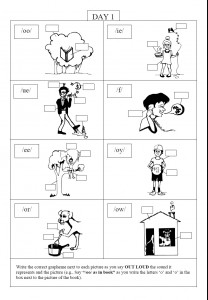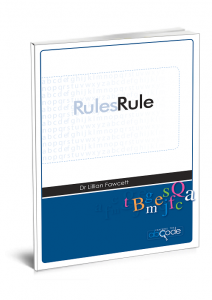Sample of the Grapheme, Vocabulary Development & Phonological Awareness sections: Multisensory Reading Program Level 4.

Phonological Awareness
The current research (see D. Kilpatrick Essentials of Assessing, Preventing and Overcoming Reading Difficulties) shows the importance of phonological awareness (and in particular phoneme manipulation) as a pre-requisite reading and spelling skill. Each week students are introduced to a phonological awareness activity which they practise until they can perform the task with automatically and accurately. The activities progress from syllabification based activities to phoneme deletion to phoneme substitution. Each activity progresses from the focus being on the initial phoneme, final phoneme, medial phonemes, second phoneme in blends and second last phoneme in blends.
Grapheme & Vocabulary Development
- This section is the key to the success of the program. On-going grapheme & vocabulary development is a key component of becoming a competent reader. This vocabulary uses the graphemes being learned plus is used in context in the oral reading section of the program.
- Each week students are introduced to various graphemes (letters or combinations of letters) and the phonemes (sounds) which they represent. Each of the graphemes is linked to a key word which is represented by a picture to assist in retention and recall. Introduce the graphemes, the accompanying phonemes, key words and picture to the student.
- There are four columns of words which use the graphemes currently being learned so the student is able to see the graphemes in context. The student colour codes each word (to accentuate the visual component of learning) by underlining the grapheme(s) being learned in the same colour and circles any prefixes or suffixes. The student then syllabifies each word and works out the pronunciation.
- The goal is for the student to learn to read one column of words in 15 seconds or less each day. On the 5th day the student should practise reading all 60 words until the 1 minute goal is reached. Research shows that reading the words at this rate (i.e., 1 word per second) is an indicator that the words have been stored in long-term memory, and that the student will be able to return to these words and still read them accurately in several weeks time
- Rules associated with the reading (decoding) or spelling (encoding) of the phoneme or graphemes are highlighted so they can be discussed with the student.
Pictures
- Each grapheme is linked to a key word and picture and these pictures are combined into an integrated picture for each phoneme or grapheme. At the end of each section, the integrated pictures have been reproduced 5 times (one for each of the 5 days of the programme). Next to the pictures is a space for the student to write in the accompanying grapheme. The student is required to write the grapheme while saying aloud the phoneme and the key picture (e.g., /ar/ for car).
- The pictures of previously learned graphemes are also included. The student should attempt to write the grapheme and say the accompanying phoneme and key picture from memory. If the student find this difficult, he/she can complete the known ones and then refer back to the appropriate page in the text to find the answer for the unknown ones. The student is more likely to remember the grapheme next time if responsibility is taken for locating the answer rather than just being told.
- The visual, auditory and tactile input, along with the repetition, ensures that this information becomes embedded in the student’s long term memory.

Click on the book image to purchase.

If you have any questions or need assistance, please send Lillian a message.





